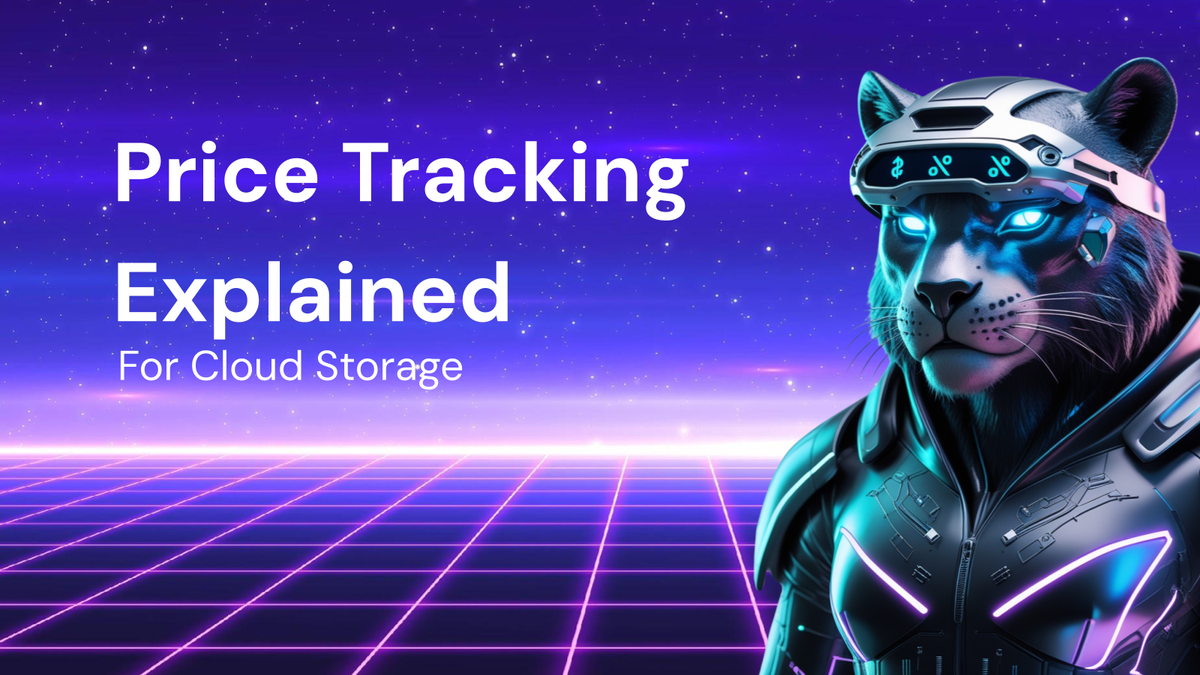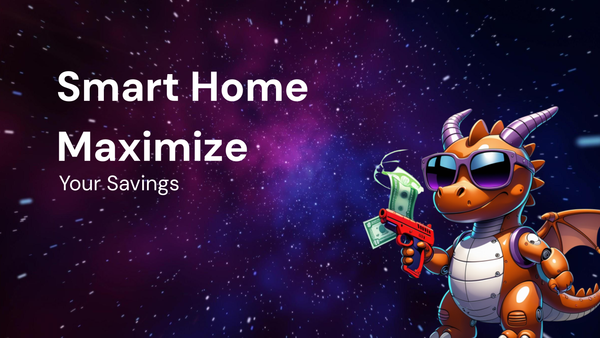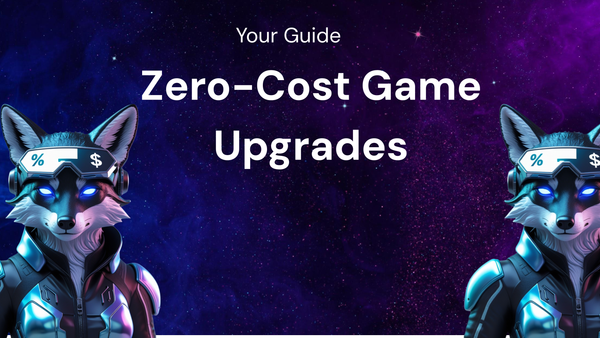Feature Breakdown: Price Tracking Tools for Cloud Storage Explained

Feature Breakdown: Price Tracking Tools for Cloud Storage Explained
Cloud storage has become an indispensable tool for individuals and businesses alike. From backing up precious family photos to managing mission-critical data, the cloud offers scalability, accessibility, and often, cost-effectiveness. However, navigating the complex pricing structures of various cloud storage providers can be a daunting task. This is where price tracking tools come in, offering a way to monitor costs, identify potential savings, and make informed decisions about your cloud storage usage. This comprehensive guide breaks down the key features of cloud storage price tracking tools, explores their benefits, and helps you understand how to choose the right tool for your specific needs.
Why Cloud Storage Price Tracking is Essential
Before diving into the features, it's crucial to understand why price tracking for cloud storage is so important in the first place:
- Complex Pricing Models: Cloud storage providers often employ tiered pricing models based on factors like storage volume, bandwidth usage, number of requests, redundancy options, and data retrieval speeds. These models can be difficult to decipher, making it hard to predict your monthly bill accurately.
- Hidden Costs: Beyond the basic storage cost, hidden charges can quickly inflate your expenses. These might include charges for egress bandwidth (downloading data), API calls, or infrequent access tiers.
- Optimizing Usage: Price tracking tools provide valuable insights into your storage consumption patterns. This allows you to identify areas where you might be overspending or underutilizing resources, leading to optimization opportunities.
- Identifying Cost-Saving Opportunities: By monitoring price changes and usage patterns, you can proactively identify opportunities to switch to more cost-effective storage tiers, consolidate data, or delete unused files.
- Budgeting and Forecasting: Price tracking tools can help you create accurate budgets for your cloud storage expenses and forecast future costs based on projected usage.
- Vendor Negotiation: Armed with detailed usage data and cost analysis, you'll be in a stronger position to negotiate better pricing with your cloud storage provider.
- Compliance and Reporting: Many industries require detailed records of cloud storage costs for compliance and reporting purposes. Price tracking tools can automate this process, saving time and effort.
- Avoiding Bill Shock: The last thing you want is a surprise bill at the end of the month. Price tracking tools help you stay on top of your expenses and avoid unexpected charges.
Core Features of Cloud Storage Price Tracking Tools
Now, let's explore the core features that you should look for in a cloud storage price tracking tool:
- Real-Time Monitoring and Cost Visualization:
- Granular Data Collection: The tool should collect granular data on storage usage, bandwidth consumption, request counts, and other relevant metrics. The more detailed the data, the more accurate your cost analysis will be.
- Real-Time Updates: The tool should provide real-time or near-real-time updates on your storage expenses, allowing you to react quickly to any unexpected changes.
- Visual Dashboards: Data should be presented in visually appealing and easy-to-understand dashboards. Charts, graphs, and tables should be used to highlight key trends and cost drivers.
- Customizable Dashboards: The ability to customize dashboards to focus on specific metrics or storage buckets is essential for tailoring the information to your specific needs.
- Cost Allocation: For organizations with multiple departments or projects using the same cloud storage account, the tool should allow you to allocate costs to specific users, teams, or projects for better accountability.
- Pricing Comparison and Analysis:
- Multi-Cloud Support: Ideally, the tool should support multiple cloud storage providers (e.g., AWS S3, Azure Blob Storage, Google Cloud Storage) so you can compare pricing across different platforms.
- Tier Comparison: The tool should allow you to compare the pricing of different storage tiers within a single provider (e.g., Standard, Infrequent Access, Glacier).
- Region Comparison: Pricing can vary significantly depending on the region where your data is stored. The tool should allow you to compare prices across different regions to identify cost-effective locations.
- Pricing History: Access to historical pricing data is crucial for identifying trends and forecasting future costs. The tool should maintain a comprehensive history of storage prices.
- What-If Analysis: The ability to perform "what-if" analysis is a valuable feature. This allows you to simulate the impact of different storage configurations or usage patterns on your overall costs.
- Alerting and Notifications:
- Customizable Alerts: The tool should allow you to set up customizable alerts based on specific thresholds. For example, you might want to receive an alert if your storage costs exceed a certain amount or if your bandwidth usage spikes unexpectedly.
- Multiple Notification Channels: The tool should support multiple notification channels, such as email, SMS, or integration with collaboration platforms like Slack or Microsoft Teams.
- Alert Severity Levels: Different alerts might require different levels of attention. The tool should allow you to set alert severity levels to prioritize responses.
- Anomaly Detection: Advanced price tracking tools may incorporate anomaly detection algorithms to identify unusual spending patterns that might indicate a problem.
- Cost Optimization Recommendations:
- Unused Storage Detection: The tool should automatically identify unused or underutilized storage buckets that can be archived or deleted.
- Storage Tier Optimization: The tool should analyze your data access patterns and recommend moving data to more cost-effective storage tiers (e.g., from Standard to Infrequent Access) based on usage.
- Data Compression and Deduplication: The tool might suggest data compression or deduplication techniques to reduce the amount of storage you need.
- Resource Right-Sizing: If you're using cloud storage for running applications or databases, the tool might recommend right-sizing your resources to optimize performance and reduce costs.
- Reserved Instance Recommendations: For long-term storage needs, the tool might recommend purchasing reserved instances to take advantage of significant discounts.
- Reporting and Analytics:
- Comprehensive Reporting: The tool should provide a variety of pre-built reports that summarize your storage costs, usage patterns, and optimization opportunities.
- Custom Report Generation: The ability to create custom reports tailored to your specific requirements is essential for in-depth analysis.
- Data Export: The tool should allow you to export data in various formats (e.g., CSV, Excel) for further analysis or integration with other systems.
- Trend Analysis: The tool should provide trend analysis capabilities to identify patterns in your storage usage and costs over time.
- Executive Summaries: For management reporting, the tool should be able to generate executive summaries that highlight key cost drivers and optimization recommendations.
- Integration and Automation:
- API Integration: The tool should offer a robust API for integration with other systems, such as billing platforms, monitoring tools, or workflow automation systems.
- Automation Capabilities: The tool should allow you to automate tasks such as deleting unused storage, moving data between tiers, or generating reports.
- Security and Compliance: The tool should adhere to industry-standard security and compliance regulations to protect your data.
- Access Control: The tool should provide granular access control features to restrict access to sensitive data and functionality.
- Support and Documentation:
- Comprehensive Documentation: The tool should be well-documented, with clear explanations of all features and functionalities.
- Responsive Support: The vendor should offer responsive support channels, such as email, chat, or phone, to assist you with any issues.
- Community Forum: A community forum can be a valuable resource for sharing knowledge and troubleshooting issues with other users.
- Training Resources: The vendor might offer training resources, such as tutorials or webinars, to help you get the most out of the tool.
Examples of Cloud Storage Price Tracking Tools
While the specific features and capabilities vary, here are some examples of tools that offer cloud storage price tracking:
- CloudCheckr (Now CloudHealth by VMware): A comprehensive cloud management platform that includes cost optimization features for cloud storage.
- Cloudability (Apptio Cloudability): Another leading cloud cost management platform with detailed price tracking and optimization recommendations.
- ParkMyCloud (Coveo): Focuses on cost optimization through scheduling and automation, including features for cloud storage.
- Kubecost: While primarily focused on Kubernetes cost monitoring, it can also provide insights into the cost of persistent volumes backed by cloud storage.
- Native Cloud Provider Tools (AWS Cost Explorer, Azure Cost Management + Billing, Google Cloud Cost Management): These tools offer basic cost monitoring and reporting capabilities for their respective cloud platforms. They are a good starting point but often lack the advanced features of dedicated price tracking tools.
- Custom Solutions: For organizations with very specific needs, it might be possible to develop a custom price tracking solution using cloud provider APIs and data analytics tools. However, this requires significant development effort.
Choosing the Right Cloud Storage Price Tracking Tool
Selecting the right price tracking tool requires careful consideration of your specific needs and priorities. Here are some factors to keep in mind:
- Cloud Providers Supported: Ensure the tool supports the cloud storage providers you're using. If you're using multiple providers, choose a tool with multi-cloud support.
- Granularity of Data: The more granular the data the tool collects, the more accurate your cost analysis will be.
- Features Offered: Prioritize the features that are most important to you, such as real-time monitoring, cost optimization recommendations, or reporting capabilities.
- Ease of Use: The tool should be easy to use and navigate, with a clear and intuitive interface.
- Integration Capabilities: Consider whether the tool needs to integrate with other systems, such as billing platforms or monitoring tools.
- Security and Compliance: Ensure the tool meets your security and compliance requirements.
- Pricing Model: Understand the tool's pricing model and how it scales with your storage usage. Some tools charge a percentage of your cloud spend, while others have fixed monthly fees.
- Support and Documentation: Choose a vendor that offers comprehensive documentation and responsive support.
- Trial Period: Take advantage of any free trial periods to test the tool and see if it meets your needs.
Implementation and Best Practices
Once you've chosen a price tracking tool, follow these best practices for implementation and ongoing use:
- Define Your Goals: Clearly define your goals for using the tool. Are you trying to reduce your overall storage costs, optimize your storage tier usage, or improve your budgeting and forecasting?
- Configure Alerts: Set up alerts to notify you of any unexpected cost changes or potential issues.
- Regularly Review Reports: Review the tool's reports on a regular basis to identify trends and optimization opportunities.
- Take Action on Recommendations: Don't just ignore the tool's recommendations. Take action to implement the suggested optimizations.
- Continuously Monitor and Optimize: Price tracking is an ongoing process. Continuously monitor your storage usage and costs, and make adjustments as needed to optimize your expenses.
- Educate Your Team: Educate your team on the importance of cost optimization and how to use the price tracking tool effectively.
- Establish Clear Policies: Establish clear policies for data storage, access, and deletion to minimize unnecessary costs.
- Automate Where Possible: Automate tasks such as deleting unused storage or moving data between tiers to reduce manual effort.
Conclusion
Cloud storage price tracking tools are essential for managing and optimizing your cloud storage expenses. By providing real-time visibility into your storage usage, identifying cost-saving opportunities, and automating key tasks, these tools can help you save money, improve efficiency, and avoid unexpected charges. By carefully evaluating your needs and choosing the right tool, you can take control of your cloud storage costs and maximize the value of your cloud investment. Remember to continuously monitor your usage patterns and proactively implement the tool's recommendations to achieve optimal cost savings and ensure you're getting the most out of your cloud storage solution.




